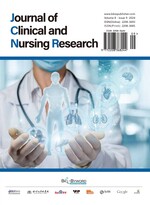Abstract
Objective: To investigate the relationship between coronavirus disease 2019 (COVID-19) and non-specific interstitial pneumonia (NSIP), with a focus on the clinical features of COVID-19 and NSIP, and the key points of differential diagnosis. Methods: The clinical data of 20 patients with common-type COVID-19 and NSIP admitted to Linyi People’s Hospital from January 21, 2020, to June 21, 2022, were retrospectively analyzed. Gender, age, history of residence in Hubei province, underlying diseases, clinical manifestations, laboratory test results (including blood routine indexes, inflammatory markers, liver function indexes, and coagulation indexes), and computed tomography (CT) scan images were compared between the two groups. Results: COVID-19 patients were younger than NSIP patients (P < 0.05). Nine COVID-19 patients had a travel history to Hubei province, while none of the NSIP patients did (P < 0.05). Eight COVID-19 patients had underlying chronic conditions, fewer than the NSIP group (12 patients; P < 0.05). Both groups experienced symptoms such as shortness of breath, expectoration, fatigue, and runny nose, but fever and cough were more severe and more frequent in the COVID-19 group. Compared to normal reference ranges, both groups exhibited normal white blood cell counts (WBC) and liver function indexes, but elevated lymphocyte counts (LYMP), inflammatory markers, and coagulation indexes, with reduced neutrophil counts (NE). WBC and LYMP were higher in the COVID-19 group compared to the NSIP group. Male patients in the COVID-19 group had higher erythrocyte sedimentation rates and C-reactive protein values than those in the NSIP group, while procalcitonin levels were lower in the COVID-19 group, although the differences were not statistically significant (all P > 0.05). The NE count in the COVID-19 group was significantly lower than in the NSIP group (P < 0.05). Alanine aminotransferase, total bilirubin, and indirect bilirubin were significantly higher in the COVID-19 group compared to the NSIP group (P < 0.05). Chest CT scans of both groups showed bilateral patchy ground-glass opacities, but the lesions in COVID-19 patients were scattered. NSIP patients’ chest CTs showed diffuse lesions centered around the hilum or multiple lesions in both lungs, with pleural involvement being rare. Conclusion: While there are certain specific clinical, laboratory, and imaging findings in both COVID-19 and NSIP, the specificity of these features is not high. Differentiating the two requires careful consideration of epidemiological history, nucleic acid testing, and antigen-antibody levels.
References
Wang Q, Mei J, Wang C, et al., 2021, Combination of Traditional Chinese and Western Medicine in the Treatment of Novel Coronavirus Pneumonia: A Meta-Analysis. Chin Critical Care Medicine, 33(6): 714–720.
Liu L, Wang N, Xu D, et al., 2012, Mechanism of Traditional Chinese Medicine Preparation in the Treatment of Novel Coronavirus Pneumonia. Chemistry of Life, 42(12): 2222–2230.
National Health Commission of China, 2022, New Coronavirus Pneumonia Diagnosis and Treatment Plan 9 (Trial Edition). International Journal of Infectious Disease Epidemiology, 49(2): 73–80.
Epidemiology Group of COVID-19 Emergency Response Mechanism, Chinese Center for Disease Control and Prevention, 2020, Epidemiological Characteristics of Novel Coronavirus Pneumonia. Chin J Epidemiol, 4(2): 145–151.
Lee RC, Soto DW, Deva S, et al., 2022, Evaluation of a COVID-19 Rapid Antigen Testing Program in a Supervised Community Distance Learning Setting for K-8 Students. J Sch Health, 92(5): 445–451. https://doi.org/10.1111/josh.13146
Ren Y, Wang S, Liu M, et al., 2020, When Interstitial Lung Disease Encounters COVID-19: Challenges and Countermeasures. Chin J Tuberculosis & Respiratory, 43(8): 633–638.
Zou H, Li SQ, 2020, Pulmonary Fibrosis in Critically Ill Patients with Novel Coronavirus Pneumonia During The Convalescent Stage and A Proposal for Early Intervention. Acta Pharmacol Sin, 42(8): 1376–1378. https://doi.org/10.1038/s41401-020-00566-4
Interpretation of the Diagnosis and Treatment Plan for Novel Coronavirus Pneumonia (Trial Version 6), n.d., 2020. Chin J Clinician, 48(3): 377–378.
Yi X, 2018, Chinese Expert Consensus on Pathological Diagnosis of Nonspecific Interstitial Pneumonia (Draft). Chin J Tuberculosis & Respiratory, 41(11): 833–839.
Tiwari S, Jain A, 2022, A Lightweight Capsule Network Architecture for Detection of COVID-19 From Lung CT Scans. Int J Imaging Syst Technol, 32(2): 419–434. https://doi.org/10.1002/ima.22706
Zeng X, Yi C, Liu Q, et al., 2021, Comparison of Clinical Features and HRCT Findings Between Usual Interstitial Pneumonia and Non-Specific Interstitial Pneumonia. Chin J CT & MRI, 20(4): 39–42.
Liu J, Wei H, Wang Y, 2021, Prevention and Control Strategies for Occupational Exposure of Nurses in Fever Clinic During the Epidemic of COVID-19. Journal of Occupational and Health, 37(1): 127–131.
Zeng Y, Zhang C, Gao F, et al., 2020, Clinical Characteristics of 49 Cases of Novel Coronavirus Pneumonia. Chin J Tuberculosis & Respiratory, 43(8): 654–658.
Chen X, Zhou Z, Yang X, et al, 2021, Dynamic Enhanced MRI in Distinguishing Usual from Non-Specific Interstitial Pneumonia. Chinese Journal of Medical Imaging, 29(10): 1007–1011.
Gao P, Li M, Li Q, et al., 2021, Epidemiological Characteristics and Prevention and Control Points of COVID-19 in Key Places and Units in the Normalization Stage. China Public Health, 38(5): 619–623.
